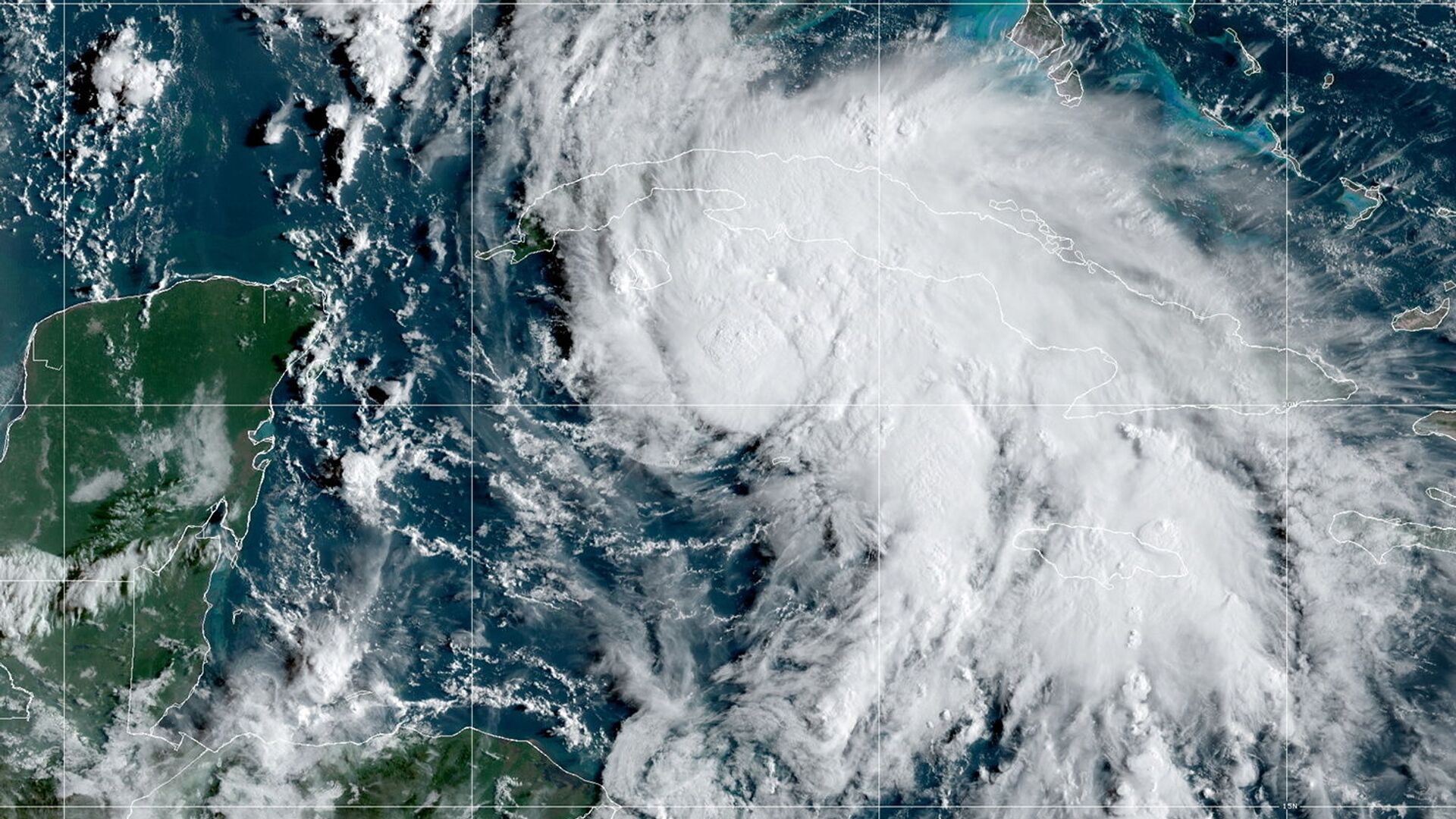https://sputnikglobe.com/20210827/hurricane-ida-forecast-to-make-landfall-in-louisiana-on-16th-anniversary-of-katrina-disaster-1083735021.html
'Extremely Dangerous' Ida Set to Make Landfall in Louisiana on 16th Anniversary of Katrina Disaster
'Extremely Dangerous' Ida Set to Make Landfall in Louisiana on 16th Anniversary of Katrina Disaster
Sputnik International
In 2005, Hurricane Katrina brought nothing but destruction and death across much of the US Gulf Coast, especially after its second landfall over Louisiana and... 27.08.2021, Sputnik International
2021-08-27T20:40+0000
2021-08-27T20:40+0000
2021-08-27T20:55+0000
us
world
newsfeed
hurricane katrina
hurricane ida
landfall
louisiana
cuba
https://cdn1.img.sputnikglobe.com/img/07e5/08/1b/1083734871_0:356:1489:1194_1920x0_80_0_0_74b03786c9957d6170f421a831c30c1f.jpg
Rapidly intensifying over the Caribbean Sea, tropical storm Ida has been upgraded to a Category 1 hurricane and is forecast to make landfall in Louisiana on Sunday, which will mark the 16th anniversary of Hurricane Katrina.The latest advisory released by the US National Hurricane Center states that the cyclone has reached maximum sustained wind speeds of 80 miles per hour, and is moving at a pace of 15 miles per hour in a northwestern direction.Ida made its first landfall on the Isle of Youth just before 2 p.m. local time on Friday. A second landfall on mainland Cuba is due for later Friday before the storm spends the next several hours crossing much of Western Cuba, and eventually moving into the warm waters of the Gulf of Mexico.Forecasters have warned that Ida will be bringing with it a “dangerous storm surge” that could raise normal tide levels by up to 6 feet. Should the storm surge arrive at high tide, officials have indicated that some areas along the Mississippi-Louisiana border could see water levels rise up to 7 feet.It was also underscored that there is a possibility that local levees outside of Louisiana’s Hurricane and Storm Damage Risk Reduction System could be “overtopped” if inundation values are higher than predicted.Ida to Strike 16 Years After KatrinaWhen Hurricane Katrina washed ashore in 2005, it quickly overpowered the US Gulf Coast and devastated the New Orleans area after breaches in the city’s levee system and floodwalls left about 80% of the city underwater. The storm had initially been registered as a Category 5 cyclone before making landfall as a Category 3 hurricane. Still considered a major hurricane, Katrina did not hold back on Louisiana. The death toll for the storm reached nearly 2,000 and displaced thousands of families.Now, New Orleanians are keeping vigilant as Hurricane Ida prepares to land on the 16th anniversary of Katrina.Collin Arnold, who serves as the director of the New Orleans Office of Homeland Security and Emergency Preparedness, told local station WESH that locals are seeing Katrina as a lesson learned, and are upping preparations."The latest I saw - 10 to 15 inches of rain expected over the entire event in the New Orleans area, which is a lot. Right now, the work is getting prepared. We are asking the public to do the same," he added.White House Press Secretary Jen Psaki revealed during the Friday briefing that US President Joe Biden would be following developments surrounding the storm and that the administration would be dispatching a response team of medical officials to the area.
louisiana
cuba
Sputnik International
feedback@sputniknews.com
+74956456601
MIA „Rosiya Segodnya“
2021
News
en_EN
Sputnik International
feedback@sputniknews.com
+74956456601
MIA „Rosiya Segodnya“
Sputnik International
feedback@sputniknews.com
+74956456601
MIA „Rosiya Segodnya“
us, newsfeed, hurricane katrina, hurricane ida, landfall, louisiana, cuba
us, newsfeed, hurricane katrina, hurricane ida, landfall, louisiana, cuba
'Extremely Dangerous' Ida Set to Make Landfall in Louisiana on 16th Anniversary of Katrina Disaster
20:40 GMT 27.08.2021 (Updated: 20:55 GMT 27.08.2021) In 2005, Hurricane Katrina brought nothing but destruction and death across much of the US Gulf Coast, especially after its second landfall over Louisiana and Mississippi. Becoming the third major storm of the 2005 Atlantic season, Katrina claimed the lives of nearly 2,000 individuals and was one of the most costliest cyclones to strike the US.
Rapidly intensifying over the Caribbean Sea, tropical storm Ida has been upgraded to a Category 1 hurricane and is forecast to make landfall in Louisiana on Sunday, which will mark the 16th anniversary of Hurricane Katrina.
The
latest advisory released by the US National Hurricane Center states that the cyclone has reached maximum sustained wind speeds of 80 miles per hour, and is moving at a pace of 15 miles per hour in a northwestern direction.
Forecasts indicate that the cyclone may make its landfall on the US Gulf Coast as a Category 4 storm. "Ida is expected to be an extremely dangerous major hurricane when it approaches the northern Gulf coast on Sunday," the bulletin states.
Forecasts indicate that the cyclone may make its landfall on the US Gulf Coast as a Category 4 storm. "Ida is expected to be an extremely dangerous major hurricane when it approaches the northern Gulf coast on Sunday," the bulletin states.





